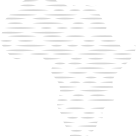Are we pushing the Earth too far to meet the demands of our increasing human development? One way to answer this question is through the concept of “planetary boundaries”, which defines the limits within which we can safely operate to sustain both nature and human well-being. This project is deepening our understanding of the relationship between human activity and one planetary boundary in particular: “biosphere integrity”.
The environment has always created challenges for humanity. But, as the rates of our population growth and development have continued to escalate, the environmental challenges we now face are increasingly of our own making. We are seeing the repercussions of our mistreatment of the environment on a planetary scale. The damage done to Earth and the natural systems that sustain life as we know it has reached dangerous levels – putting human well-being at great risk.
The planetary boundary concept was introduced in 2009 by researchers at the Stockholm Resilience Centre to address an urgent need to define the environmental limits within which humanity can continue to safely operate. Updated in 2015 (Steffen et al), the framework identifies a set of nine quantitative planetary boundaries that control the resilience and stability of the Earth system. They are climate change, change in biosphere integrity (biodiversity loss and species extinction), stratospheric ozone depletion, ocean acidification, biogeochemical flows, land-system change, freshwater use, atmospheric aerosol loading, and the introduction of novel entities.
Crossing these boundaries increases the risk of driving the Earth system into a new state, one that will likely be less hospitable to humanity. The framework aims to guide society away from overstepping these boundaries and towards corrective action before we cause irrevocable damage to the planet. Decision-makers can use the framework to draw attention to the effect human activity has on environmental stability at all levels, and to implement sustainable development goals to preserve the planet for future generations.

Biosphere integrity is considered one of the core planetary boundaries in regulating Earth system functioning. Encompassing all ecosystems and biodiversity (the variety of biological life), the biosphere interacts with the eight other planetary boundaries to maintain the planet’s capacity to continue functioning, including its ability to self-regulate and self-heal. Biodiversity loss due to our growing pressure on ecosystems to supply us with food, water, energy and land is causing a reduction in biosphere integrity – as evidenced by increasing species extinction, biodiversity loss, and changes in the services which our ecosystems provide. To understand the impact human activity is having on biosphere integrity, scientists and decision-makers need readily available, reliable data on genetic diversity and biodiversity loss. Although global extinction rates and highly threatened species lists are often used as indicators of biodiversity loss, these can be heavily biased towards a particular species that are easier to see and count, don’t capture the role of species in the functioning of ecosystems, and run the risk being too slow to alert us to biodiversity loss. By comparison, the Biodiversity Intactness Index (BII) is a proposed indicator that aims to make a more holistic assessment, and can be adjusted in scale and purpose, to focus on specific species relative to particular land uses and areas. It is also easier to aggregate than other data-gathering methods and simple to understand – and can hence assist policymakers to choose with urgency appropriate decisions that retain biosphere and thus Earth system resilience.
This project aims to explore the impact of human activity on biosphere integrity and what this means for the future of Earth as we know it by using the BII to measure how much original biodiversity remains intact in the face of various land uses and related pressures in Africa. The project also seeks to assist decision-makers on the continent to move forward on a sustainable development agenda by highlighting the benefits of the natural world on our well-being.






